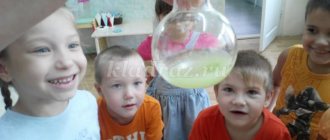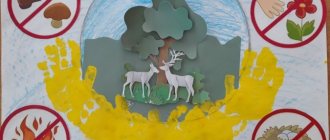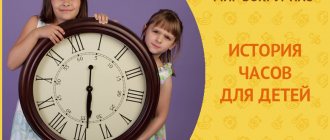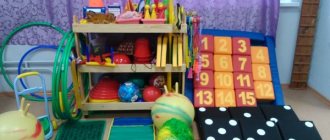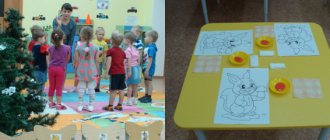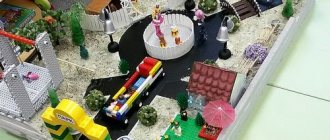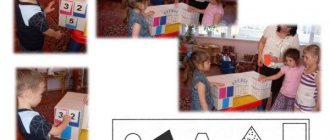All materials on the topic “Lapbook “Water”” (21 pictures)
Lapbook on the topic “Water” for preschool children. Lapbook for studying the lexical topic “Water” for use in classes “A droplet wanders around the world”, “Journey of a droplet”, Magical, amazing water”, “Water is life”, etc.
Subscribe to download pictures and download all the templates, backgrounds, pockets and tasks for the “Water” lapbook.
Energy source
Water is an important source of energy. The power of moving water is very high, so it is used to generate electricity. Hydroelectric power plants are built where water moves at high speeds, such as rivers. In addition, artificial structures, such as dams, which create water movement, can also be erected.
Water flowing from the upper level to the lower level through special turbine pipelines acquires greater speed. The stream of water then flows onto the blades of the hydraulic turbine and rotates them. This is how energy turns into mechanical energy. The generator connected to the turbine rotates and the mechanical energy becomes electrical. Transformers convert electricity into the required voltage. Electricity is sent through transmission lines to distribution stations.
Source
Three states of water
Substances, depending on their freezing, melting and boiling temperatures, can be found in nature in three states of aggregation - solid , liquid and gaseous . Water freezes at 0°C and boils at 100°C.
In everyday life, we can encounter water in any of its three states, and its form is constantly changing. Liquid water evaporates and turns into a gaseous state - water vapor. It condenses and turns into liquid. At sub-zero temperatures, water freezes and turns into solid ice.
If we place table salt crystals in a vessel with water, we will be able to observe how the amount of solid substance gradually decreases. At the same time, water acquires new properties: it acquires a salty taste, density and freezing point change. The resulting liquid can no longer be called water, it is a solution. Intermolecular bonds arise between salt and water molecules, due to which salt molecules are detached from the surface of the crystal.
Lesson on the topic: “Water” 1st grade
Lesson on the topic: “Water” 1st grade Type: lesson on learning new material. Technology: person-centered developmental training with computer support. Lesson objectives:
Educational:
- formation of a holistic view of the world through observation, awareness, perception and activity; introduce the properties of water, the three states in nature; teach how to work with proposals through a practical approach;
Developmental:
- develop such techniques of mental activity as comparison, classification, analysis; develop a conscious attitude towards the result of your educational work; development of self-control;
Educating:
- cultivate a sense of cooperation and mutual assistance towards each other; cultivate a caring attitude towards water and nature in general.
LESSON OBJECTIVES:
- Expanding children's ideas about the world around them through comparisons, comparisons, connections of meaningful fragments about water. Creating conditions for schoolchildren to master new natural science concepts. Use children’s existing experience when working with new material. The organization of the educational process must meet all the basic requirements for the organization of the educational process, taking into account the individual and psychological characteristics of students. Development of students' oral speech skills.
EQUIPMENT:
- General class: glasses of water, strips of colored paper, a nail, a cork, a poster with a proverb and the names of rivers, a globe. TSO: computer, multimedia projector, presentation. Individual: 1st grade textbook “The World Around You”, author, workbook with a printed base, emoticons depicting water droplets (yellow and blue).
Lesson progress 1. Organizational moment.
Good afternoon nature lovers. Today we will continue to learn the mysteries of the world around us. What mood will we take with us? Then go ahead for knowledge.
2. Setting the topic of the lesson.
1). Teacher's opening remarks:
Each of us dreams of seeing a miracle at least once in our lives, often without noticing it. That miracles constantly surround us. For example: fantastic patterns of frost, bizarre shapes of clouds, patterned lace of snowflakes, huge icebergs, spring rain. - Today we will talk about one of the most remarkable and mysterious miracles.
2). Guessing the topic of the lesson.
- Look at the board: This rebus contains the secret of our lesson.
Guess it (a rebus is posted on the board, students look at it, offer possible answers. The answer is water).
What do you think we will talk about in class today? What is this mysterious miracle? - This is water!
3. Updating knowledge.
a).- Guys, tell me, where in nature do we meet water?
. .
- Now let's see where water is found in nature and why they call mysterious water
b).
Showing the presentation “Water and its properties”
- slide 1: “Water in nature” slide 2: picture + poetry:
Have you heard about water? They say she is everywhere! In a puddle, in the sea, in the ocean And in a water tap.
slide 3: How an icicle freezes + picture slide 4: A fog creeps into the forest slide 5: It’s called a glacier in the mountains + picture slide 6: It curls like a silver ribbon.
We are accustomed to the fact that water is always our companion + picture
slide 7-9: Rain, dew. Ice, snow. Clouds, steam, fog, slide 10: Water under a microscope.
slide 11 -15: Ocean. Sea. River. Lake. Swamp + pictures - all these are bodies of water. (detailed presentation on disk).
4. Physical education minute.
There are 2 frogs in the swamp. Two green frogs. We woke up early in the morning, rubbed ourselves with a towel and returned back. This is the secret of health. Hello to all physical education friends.
5. Continued work.
Now look at the globe. Rivers cover our globe like a blue web. Astronauts from space see our planet blue, since there is more water on Earth than land.
6. Practical part of the lesson. Conducting experiments.
“And now it’s time to get to know the water better.” Experiments will help you discover the secrets of water.
A).
—
EXPERIENCE No. 1.
(conducted by teacher) Equipment:
glasses of water, stripes of white, blue and red, glass of milk.
Contents of the experience:
1). Look at the water in the glass. What color is it? . .
Let's compare the water in a glass with stripes of white, blue, and red.
— What can you say about the color of the water? It is neither white, nor blue, nor red.
Conclusion: water has no color, it is transparent.
A water transparency icon is posted on the board -
C/v/et and image. "eyes"
b).
—
EXPERIMENT No. 2 (conducted by a student).
Equipment:
glass of water.
Contents of the experience:
—
My assistant, Alena, will help me conduct the second experiment (the girl goes to the teacher and begins her experiment with a story).
One day I became interested. Does the water have a smell? I asked my mother: “What does the water smell like?”
Mom said: “Let's find out. We need to conduct an experiment."
We poured water into a glass and smelled it: first mom, then me.
Mom said: “I didn’t feel anything, there was no smell.”
“And I didn’t smell anything either.”
- Now I suggest you: smell the water in my glass. What smell do you smell?
Conclusion: neither mom, nor Alena, nor you guys smelled the water. This means the water has no odor.
An odorless water icon is posted on the board.
Crossed out nose
V).
—
EXPERIMENT No. 3 (conducted by a student).
Equipment: glass of water.
Contents of the experience:
An assistant, Dima, will also help me conduct this experiment (the boy goes to the teacher and begins his experiment with a story).
And I had this question: Does water have a taste?
We consume water from food.
— We drink juice, tea. We eat soup for lunch. All these products taste different.
Here's an interesting question: Does plain water have a taste?
So I'm testing the waters. I didn't feel the taste. I
I think that water has no taste.
Now you too try the water.
What do you think: Do you have
water taste? . .
Conclusion: water has no taste.
An icon of water without taste is posted on the board.
Crossed out tongue
G). — Now you have seen three experiments that helped us uncover some of the secrets of water. We learned the properties of water. We will now repeat what properties these are, and the icons will help us.
— Consolidation: Water is a colorless, transparent (liquid), odorless and tasteless.
(frames of the presentation are released - the presentation continues - slides 16-17).
7. Working with the textbook, p. 88.
— Not all the secrets of water have been revealed yet. The textbook will help us reveal other secrets. We open with. 88.
I).
Us. 88 find the image of a magnifying glass. Arina,
read the questions marked with a tick.
Can salt be dissolved in water? What about sugar? No experience is needed for this. We drink tea with sugar every morning. We eat soup for lunch.
Will a nail sink in water? What about the traffic jam? Let's check.
(the nail sank, but the cork did not). The iron nail, heavy, sank.
The cork is light and remains floating.
— You will learn in detail about why some objects float and others sink in physics lessons.
b). Now let's look at the table "Transformation of water."
What word is written in the middle? - Water.
Read what the arrows show.
— Read the question at the top of the table: What kind of water is there?
Teacher's message:
Snow, frost, hail, frost - this water in nature is in a solid state (the words are posted on the board and the hardness icon is a square). Dew is water in a liquid state - there is a drop of water on the board. Fog, steam is water in a gaseous state - a kettle with steam.
V).
Completing the task on p. 89.
- Look at the drawings. Tell me why water is needed.
Conclusion: Water is life.
And now we will be convinced of this by watching the presentation.
G). Show the presentation (end of the presentation - slides 18-29). In the last frame the student reads a poem:
The symbol of life on Earth is water! Save it and take care of it! We are not alone on the planet!
8. Lesson summary.
— What new did you learn in the lesson? . . .
Look, there are blue and yellow droplets of water on your desks.
- Blue drop - I liked the lesson, it was interesting. Yellow - difficulties arose.
- Raise the drop that you think is necessary.
Thank you. The lesson is over.
Share
Get text
Water is the basis of life
All living things are 75% water. This is the most necessary element of living nature. Water constantly circulates between the seas, atmosphere and land, creating conditions in which life can exist and develop.
Water, at first glance the simplest chemical compound, is the basis of life on Earth. Water transports heat, dissolves and transports colossal masses of chemicals and elements, destroys and redistributes rocks, forms landforms, and even participates in the formation of minerals. In addition, water is involved in a number of meteorological phenomena, such as precipitation, fog, clouds. It is involved in the creation of currents, waves, movement of river beds and the formation of reservoirs. It is also a living environment for many organisms.
A person can live without water for only a few days. For the normal functioning of all organs, a person needs at least 1.5 liters of water per day. Water delivers nutrients to the body's cells and carries away waste products. In addition, water is involved in the processes of thermoregulation and human respiration.
Under the rays of the Sun, water evaporates from reservoirs and rises into the air. There, droplets of water collect in clouds and clouds and fall to the ground in the form of rain or snow, which turns into water. It is absorbed into the earth and again returns to the seas, rivers and lakes. And everything starts all over again. the water cycle occurs in nature.
Download and print Water coloring pages for children
- DownloadPrint»>
- DownloadPrint»>
- DownloadPrint»>
- DownloadPrint»>
- DownloadPrint»>
- DownloadPrint»>
- DownloadPrint»>
- DownloadPrint»>
- DownloadPrint»>
- DownloadPrint»>
- DownloadPrint»>
We advise you to look at other coloring pages:
Source
How much and where?
There is a total of 1390 million km 3 of water on the globe, most of it in the seas and oceans - 96.4%. On land, water is hidden in glaciers and permanent snow - about 1.86%. Antarctica, Greenland and many other islands in high latitudes are covered with eternal ice. In the mountains at high altitudes, mountain glaciers form. There is little water underground - only about 1.7% of the total volume, and land waters (rivers, lakes, swamps, reservoirs) account for approximately 0.02%. There is water in living organisms and in the atmosphere too. But there is little fresh water on the planet, which is so necessary for us to live - only 2.64%.
All pictures for the lapbook about water
- Lapbook about water. “Water is sorceress, source of life, droplet”
- Lapbook “Journey of a droplet, water”
- The water cycle, the journey of a droplet. Central background for laptop
- Lapbook on the theme “Water. All about water. Drop." Background 3
- Pockets for lapbook “Water. Drop"
- Pocket templates for lapbook “Water, Droplet”
Cut out the template around the perimeter. —>
- "Experiments with water." Lapbook pocket template
Cut out the template around the perimeter, bend along the lines. —>
- Pocket templates for the “Water” lapbook. Conditions of water
Three open pockets: “Solid”, “Liquid”, “Gaseous”.
The pockets come with 12 square ones. —>
Software tasks:
Teach children to act out simple plots, work with transparent dishes, unfamiliar solutions.
Familiarize children with the properties of water: transparent, water is a liquid, tasteless, odorless. Clarify children's knowledge about the purpose of water in our lives.
To develop visual perception, cognitive activity of children in the process of experimentation, mental operations: comparison, generalization, ability to analyze, coherent speech, ability to reason, draw conclusions.
Develop a caring attitude towards water, the ability to work in a group, negotiate, and take into account the opinion of a partner;
Equipment: card in the form of a drop of water, plastic cups, napkins, spoons, glasses with milk, water, fir oil, juice, brushes, sippy cups, cocktail straws, sheets of paper, blue watercolors, easel, cards with diagrams, costumes for dramatization , audio recording “The Murmur of a Brook”, video “Droplets Jump - Jump”.
Progress of the lesson: An audio recording of a knock on the door sounds.
Q: Guys, do you hear someone knocking? (goes, opens the door, a girl in a droplet costume enters the group). Q: Guys, look who came to visit us?
Children: Droplet.
Droplet: Hello, children!
Children say hello Droplet: Today I am going on a journey to the Kingdom of Water, I invite you to go with me on this amazing journey. I travel all over the world, I’ve seen a lot, I know a lot of interesting things about water. Do you agree?
D: Yes
An audio recording of a babbling brook (the sound of water) sounds. Droplet: Guys, listen and determine what these sounds are. Children. These are the sounds of water. Q: Have you heard about water? They say she's everywhere! In a puddle, in the sea, in the ocean And in a water tap... Q. Is this so? We'll find out now! Where did Droplet come from, where could she be? Let's look at the pictures that show the places where our Droplet traveled. Name them.
( Pictures on the screen: sea, river, swamp) . Presentation. Children. Lake, sea, river. K: That's right, guys! So I am a small piece of water.
K: Guys, now I propose to go to a fairy tale (dramatization of a fairy tale).
Q: A long time ago, in one city there lived a ruler and he had three sons. One day he gathered his sons and declared his will.
The ruler of the city: “Go, my sons, throughout the wide world and find me a wonderful miracle, without which there is no life on earth. The brothers thought about it. They dispersed all over the world in search of a miracle.
Q: The brothers walked around the world for a long time in search of a miracle.
Finally, after a long search, they returned and fell at the feet of their father.
The eldest son “Father, I brought you gold and silver” - B: the eldest son said, laying precious metal at his father’s feet, the middle son brought precious stones, and the youngest son - ordinary water. Everyone started laughing at him, and he said:
Younger son: “Water is a great miracle on Earth. The traveler I met was ready to give me all his jewelry for a sip of water. He was thirsty. I gave him clean water to drink and gave him some more to spare. I didn’t need his jewelry; I realized that water is more valuable than any wealth.
And another time I saw a drought. Without rain, the whole field dried up. It came to life only after it rained, filling it with life-giving moisture.
- The third time I had to help people put out a forest fire. Many animals suffered from it. If we had not stopped the fire, the whole village could have burned down if it had spread to it. We needed a lot of water, but we managed with all our might. That was the end of my search. And now, I think you all understand why water is a wonderful miracle, because without it there would be nothing alive on Earth. Birds, animals, fish, and people cannot live a day without water.
Q: And the youngest son finished his story by showing all the honest people the wonderful properties of water.
The father of his youngest son listened and declared water the greatest miracle on earth. He ordered to conserve water and not pollute reservoirs.
Q: Here is water, an amazing miracle on earth, consisting of many drops (show water in a glass). Droplets of water love to jump and jump when they fall from the sky. Do you love it? Then come out, let's rest a little. And let the droplet look at us.
Fizminutka Removable disk. Droplets jump-jump.
- Who needs water? (Children answer). Can a person live without water? (Children answer). Of course, water is necessary for all living things; without water there would be no life on our Earth. K: Guys, now I propose to go to the laboratory to find out the properties of water, which the youngest son of the ruler showed to all honest people. Practical experimentation
Q: But before you and I go into the laboratory, you need to put on a special uniform - these aprons and sleeves. Then you and I will truly become real researchers.
Children wear aprons and sleeves (remember the rules of conduct in the laboratory)
Experiment 1. “Water is a liquid” there are two glasses in front of you, one with water, the other empty. (The teacher and children pour water from one glass to another.) Is water flowing? Why? Because it's liquid. And so that you guys remember this, I prepared this symbol (posted on the board).
- (Picture on the easel of pouring water) put a glass of water in an empty glass. What is water? The conclusion is a liquid, it can be poured from one glass to another.
Experiment 2. “Water has no taste”
Invite children to try water through a straw. Does she have taste? Give the children a taste of the juice for comparison. Conclusion: water has no taste, it is not tasty (the symbol is posted on the easel)
Experiment 3. “Water has no smell”
Children sniff fir oil and then water. What does the water smell like? It doesn't smell at all. (picture of a crossed out nose)
Experiment 4. “Colorless water”
Educator: There are two glasses on the table, one with water, the other with milk (you can use highly colored water). I suggest putting one teaspoon in a glass of water, the other in a glass of milk.
– What did you notice? (Children express their opinion: a spoon is visible only in a glass of water. It is not visible in a glass of milk. The teacher helps the children formulate another of the properties of water: pure water is transparent, all objects are visible through it. Conclusion: water has no color, it colorless.)
Educator: Well done, guys! You are so friendly and you all coped with the task. Oh, our little one is feeling sad.
K: I once had a lot of girlfriends and I really miss my girlfriends.
Educator: Guys, let’s all help our Droplet draw her girlfriends. Take brushes and paint sheets of paper with blue paint (I turn on the music recording)
Recording calm music
K: Oh, how great! How many droplet friends!
Q: our droplets are resting on the leaves, let's go to the easel and once again remember what we learned about water today! (pictures on the easel)
Water is a liquid; it can be poured, poured, or poured out.
Water is colorless.
The water is tasteless.
Water has no smell.
Educator: Water is the source of life, one of the most amazing and mysterious on the planet.
For both people and animals, there is nothing more valuable than water. Everyone needs to cherish water, because we can’t live without it!
And so our laboratory is closing, you guys did a great job. We'll come back here, but now let's clap for each other.
